In the early 2030s, humanity’s fascination with Mars reached new heights as space agencies and private corporations embarked on ambitious missions to explore the Red Planet. After years of meticulous planning and technological advancements, the first crewed mission successfully landed on Mars in 2035. This momentous achievement marked the beginning of a new era in space exploration.
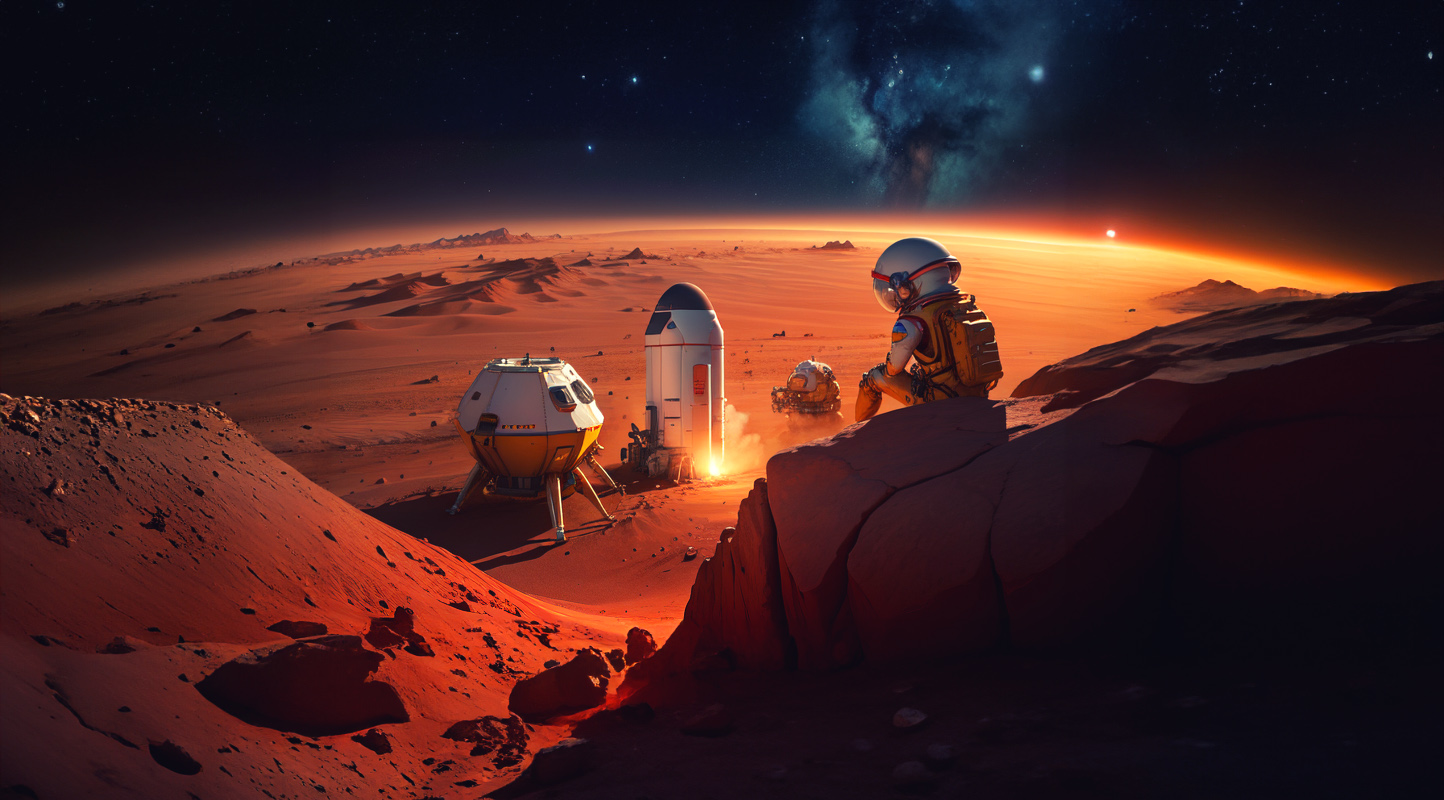
As the pioneers set foot on Martian soil, they encountered a hostile and barren landscape, but also a world of untapped potential. Over the following decades, several more missions were sent to Mars, each building upon the knowledge gained from previous expeditions. Scientists and researchers worked tirelessly to understand the planet’s geology, atmosphere, and potential for sustaining human life.
It was in the year 2103 that Phoenix Colony was officially established. Named after the mythical bird symbolizing rebirth and resilience, Phoenix Colony became a beacon of hope and progress on Mars. Situated on the Tharsis volcanic plateau, the colony quickly grew into a vibrant community of scientists, engineers, and pioneers from various disciplines. They were driven by a shared vision to expand human presence on Mars and unlock its mysteries.
Over the years, Phoenix Colony became a hub of innovation and technological advancement. Its residents developed cutting-edge technologies to tackle the unique challenges of living on Mars. Closed-loop life support systems were perfected, enabling the recycling of air and water and reducing reliance on external supplies. Advanced robotics and AI systems were employed to assist in various tasks, from maintenance to scientific research.
The colony’s growth was fueled by the rich mineral resources found in the Tharsis region. Extensive mining operations allowed the colonists to extract valuable elements such as iron, nickel, and sulfur, contributing to their self-sufficiency and facilitating further exploration and development.
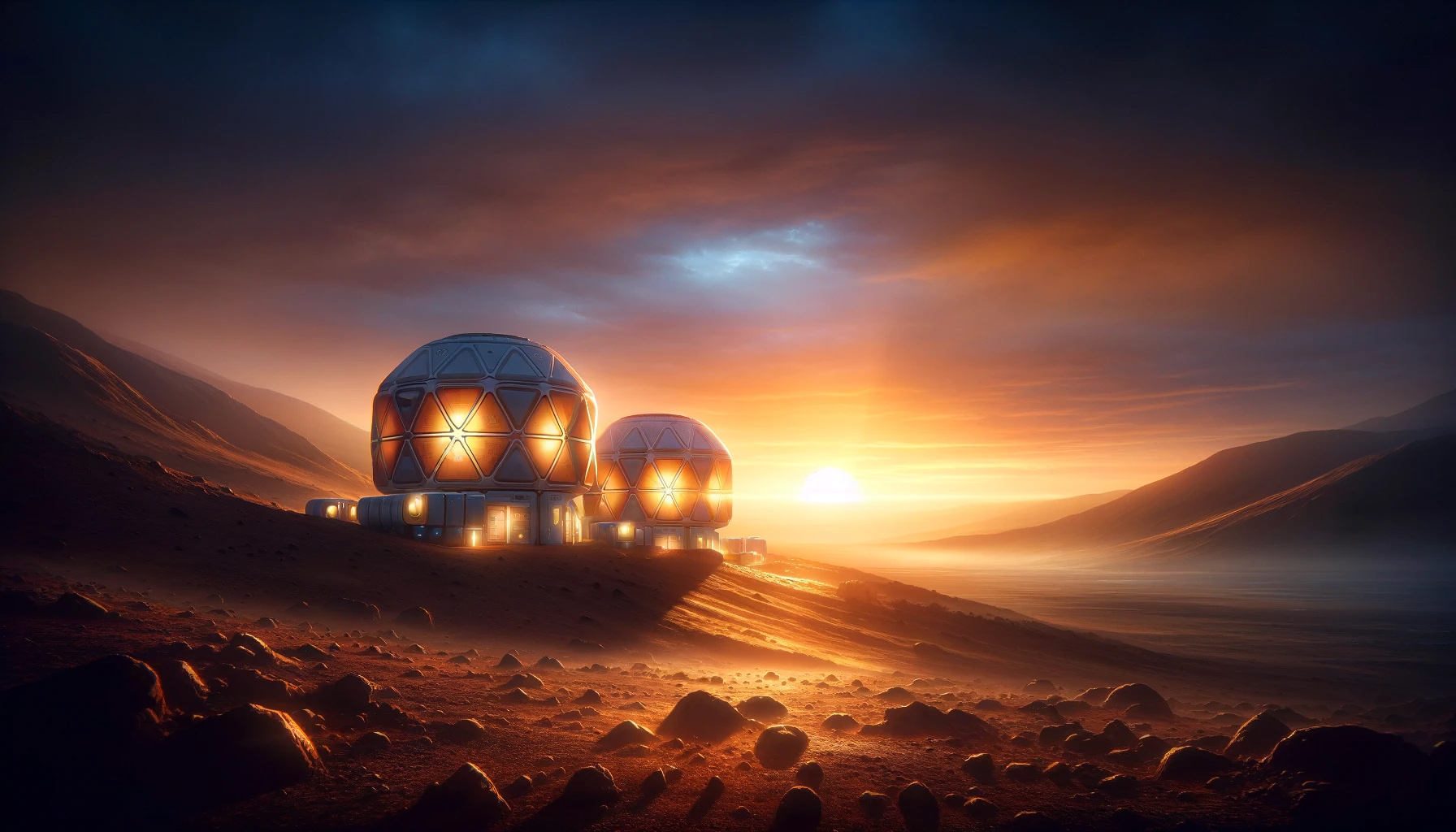
In the current era of 2175, Phoenix Colony stands as a testament to human ingenuity and perseverance. Its population has grown steadily, now numbering in the thousands. The colony boasts a range of facilities, including research laboratories, observatories, and manufacturing plants, all dedicated to pushing the boundaries of scientific knowledge and advancing human presence on Mars.
The exploration of Mars is an ongoing endeavor, with Phoenix Colony serving as a base for future missions and endeavors. The collective efforts of the colonists have laid the foundation for a sustainable and prosperous future on the Red Planet, where humanity continues to unlock the secrets of Mars and forge a new chapter in our cosmic journey.
Here is a chronological history of Mars exploration and the establishment of Phoenix Colony:
2030s: The era of Mars exploration begins with unmanned missions to study the planet’s geology, atmosphere, and potential for human colonization.
2035: The first crewed mission successfully lands on Mars, marking a historic milestone in human space exploration. The astronauts conduct scientific experiments and gather valuable data about the planet.
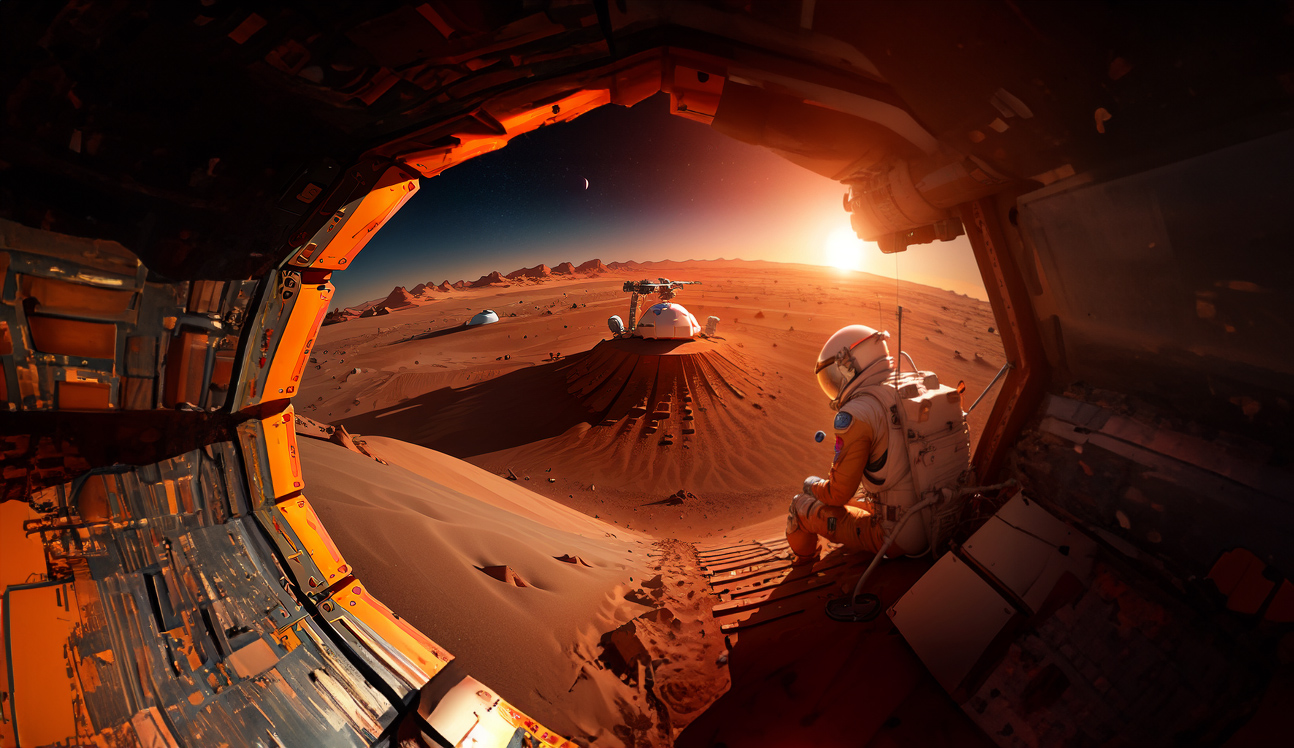
2040s-2050s: Several more crewed missions follow, establishing a steady presence on Mars. These missions focus on expanding knowledge of Mars’ resources, climate, and potential habitats for future colonization.
2070s: The concept of establishing permanent human settlements on Mars gains traction. Extensive planning and research are undertaken to identify suitable locations for colonization.
2103: Phoenix Colony is officially established on Mars’ Tharsis volcanic plateau. Named after the mythical bird, the colony becomes a symbol of resilience and progress in the face of the harsh Martian environment.
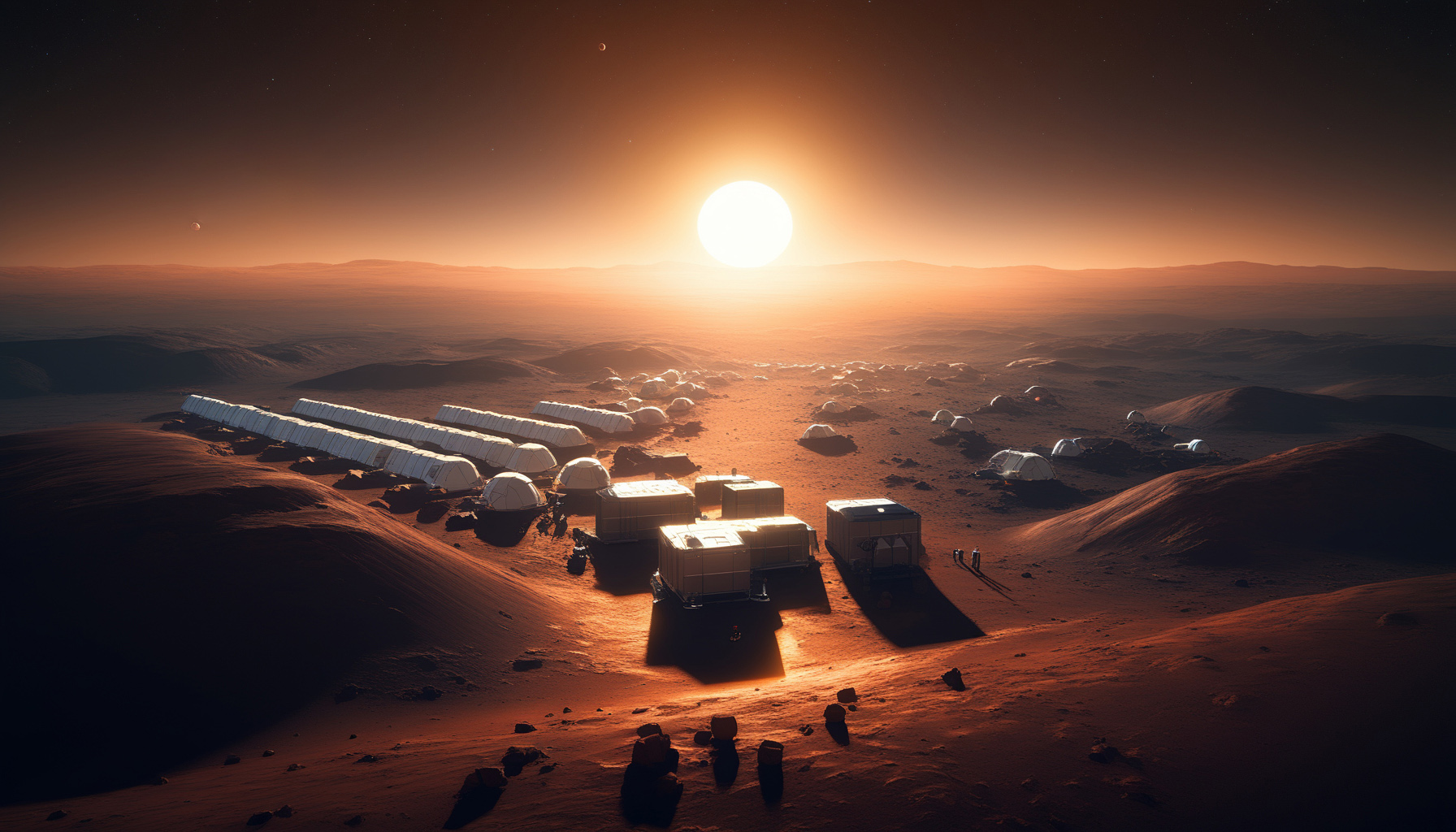
2100s-2150s: Phoenix Colony experiences steady growth and development. The colonists refine closed-loop life support systems, allowing for sustainable recycling of air and water. Advanced robotics and AI technologies are integrated into colony operations.
2175: Phoenix Colony has evolved into a thriving community of scientists, engineers, and pioneers. Its population numbers in the thousands, making it a significant center of scientific research and technological innovation on Mars.
Throughout this period, various milestones are achieved in Mars exploration, including the mapping of the planet’s surface, the discovery of water ice in underground reservoirs, and the successful deployment of robotic rovers for scientific exploration.
Phoenix Colony serves as a base for further exploration and expansion efforts on Mars. The rich mineral resources of the Tharsis volcanic plateau are extensively mined, supporting the colony’s growth and contributing to advancements in Martian technology.

The history of Mars exploration and the establishment of Phoenix Colony highlights humanity’s indomitable spirit of exploration, resilience in the face of challenges, and the continuous quest to unlock the mysteries of the cosmos.
2130s-2150s: The Golden Era of Martian Colonization
The period from the 2130s to the 2150s marks a significant milestone in the history of Mars exploration and colonization. It represents the Golden Era, a time of rapid progress and expansion as humans establish their presence on the Red Planet.
2130s: The first wave of Martian colonization begins with the establishment of multiple settlements across Mars. These initial colonies are primarily focused on scientific research and resource extraction. The colonization efforts are supported by advanced spacecraft and infrastructure technologies, enabling regular transport of people and supplies between Mars and Earth.
2135: The construction of the first permanent habitats begins. These habitats are designed to withstand the harsh Martian environment and provide essential life support systems for the colonists. The habitats serve as the foundation for the growth and development of the Martian colonies.
2140s: The population of Mars steadily increases as more people choose to migrate and make Mars their home. The colonies become more self-sufficient, producing food through hydroponic farming and harnessing solar energy for power generation.
2145: The establishment of Phoenix Colony on the Tharsis volcanic plateau marks a significant milestone. Phoenix Colony quickly becomes a thriving hub of scientific research, technological innovation, and cultural exchange. It attracts a diverse range of professionals, including scientists, engineers, artists, and entrepreneurs.
2150s: Martian colonies continue to expand, with the development of new settlements and the growth of existing ones. The focus shifts towards creating sustainable ecosystems and developing efficient infrastructures for transportation, communication, and resource management.
During this period, significant advancements are made in terraforming technology and Martian agriculture. Greenhouse structures are built to create controlled environments for plant growth, contributing to the gradual transformation of the Martian landscape.
The Golden Era of Martian colonization is characterized by cooperation and collaboration among different colonies. Knowledge sharing and resource pooling enable the colonies to overcome challenges and accelerate progress. Interplanetary trade networks are established, fostering economic growth and cultural exchange between Earth and Mars.
In the 2150s, as the Golden Era draws to a close, Mars stands as a testament to humanity’s ability to adapt and thrive in new frontiers. The achievements of this era lay the foundation for further exploration and the realization of humanity’s long-standing dream of becoming an interplanetary species.

2103: Establishment of Phoenix Colony
In the year 2103, Phoenix Colony was officially established on Mars. Named after the mythical bird that symbolizes rebirth and resilience, Phoenix Colony was one of the early human settlements on the Red Planet. It was strategically located on the Tharsis volcanic plateau, offering access to valuable resources and a promising environment for scientific research.
The early years of Phoenix Colony were marked by the construction of infrastructure and the establishment of the necessary facilities to support human life on Mars. Habitats, research stations, and communication networks were developed, providing the colonists with a comfortable and functional living environment.
2151: The Great Space Accident and the End of the First Golden Era
In the year 2151, a catastrophic space accident occurred that had a profound impact on Mars colonization and marked the end of the first Golden Era. During a routine supply mission from Earth to Mars, a large transport vessel carrying essential resources and personnel suffered a critical malfunction and exploded upon entering the Martian atmosphere.
The accident resulted in the loss of many lives and the destruction of vital supplies and equipment. The shockwaves of the explosion reverberated across the Martian colonies, causing widespread disruptions and instilling a sense of vulnerability among the colonists.
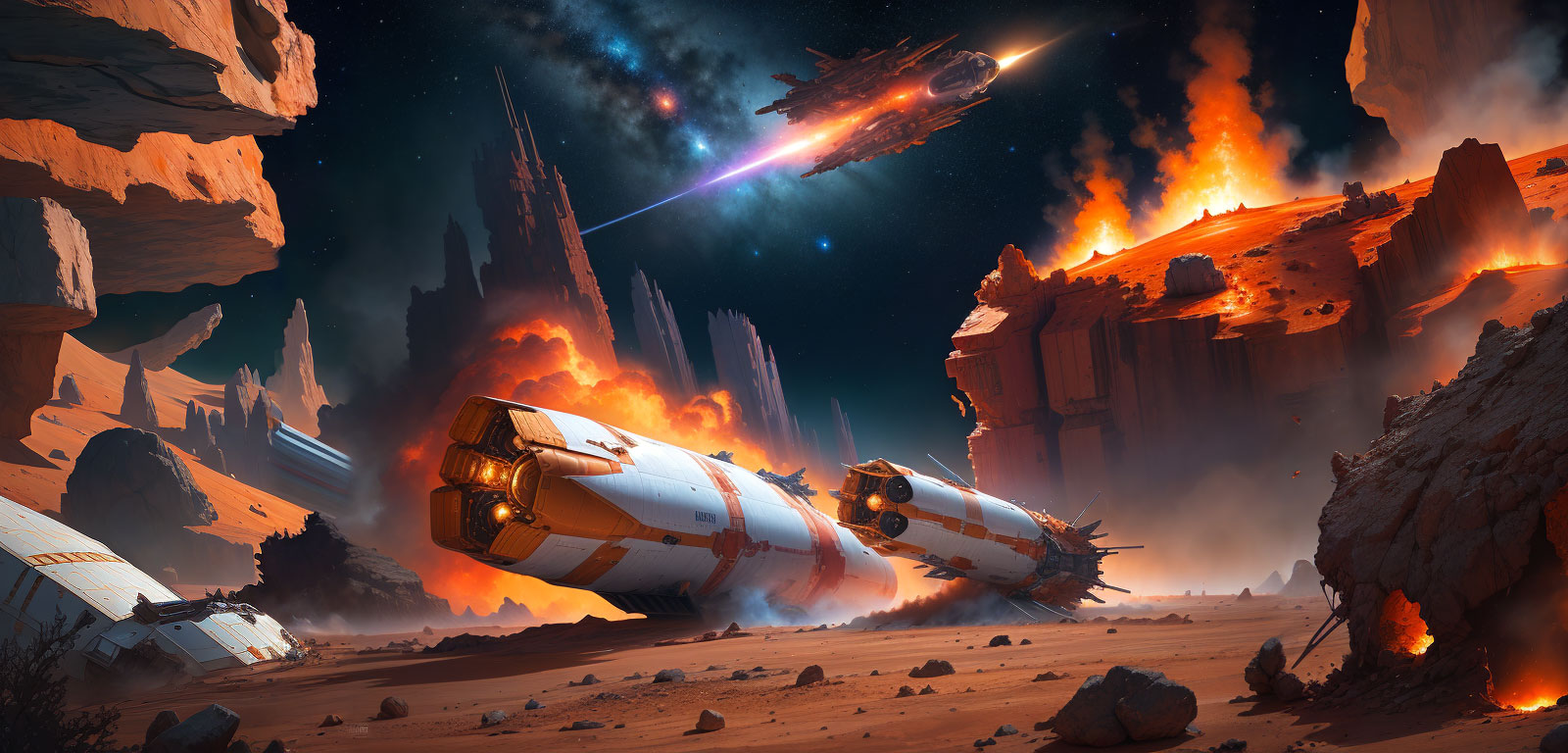
The aftermath of the Great Space Accident brought about a period of reflection and reevaluation. Safety protocols and space travel regulations were revised, and efforts were intensified to improve transportation systems and emergency response procedures. The incident served as a reminder of the inherent risks associated with space exploration and colonization.
While the accident marked the end of the first Golden Era, it also sparked a renewed determination among the Martian colonists to learn from the tragedy and build a safer and more resilient future. Lessons were learned, technologies were refined, and collaborations between Earth and Mars were strengthened to ensure the continued progress of Martian colonization.
Phoenix Colony, as one of the pioneering settlements, played a crucial role in the recovery and rebuilding efforts. The resilience and spirit of the colonists shone through as they worked together to overcome the challenges and forge ahead in their pursuit of a thriving Martian civilization.
The Great Space Accident of 2151 serves as a significant turning point in the history of Martian colonization, reminding humanity of the risks and uncertainties that come with venturing into the unknown. It also underscores the determination of the Martian colonists to push forward, learn from their mistakes, and continue their journey of exploration and discovery on the Red Planet.